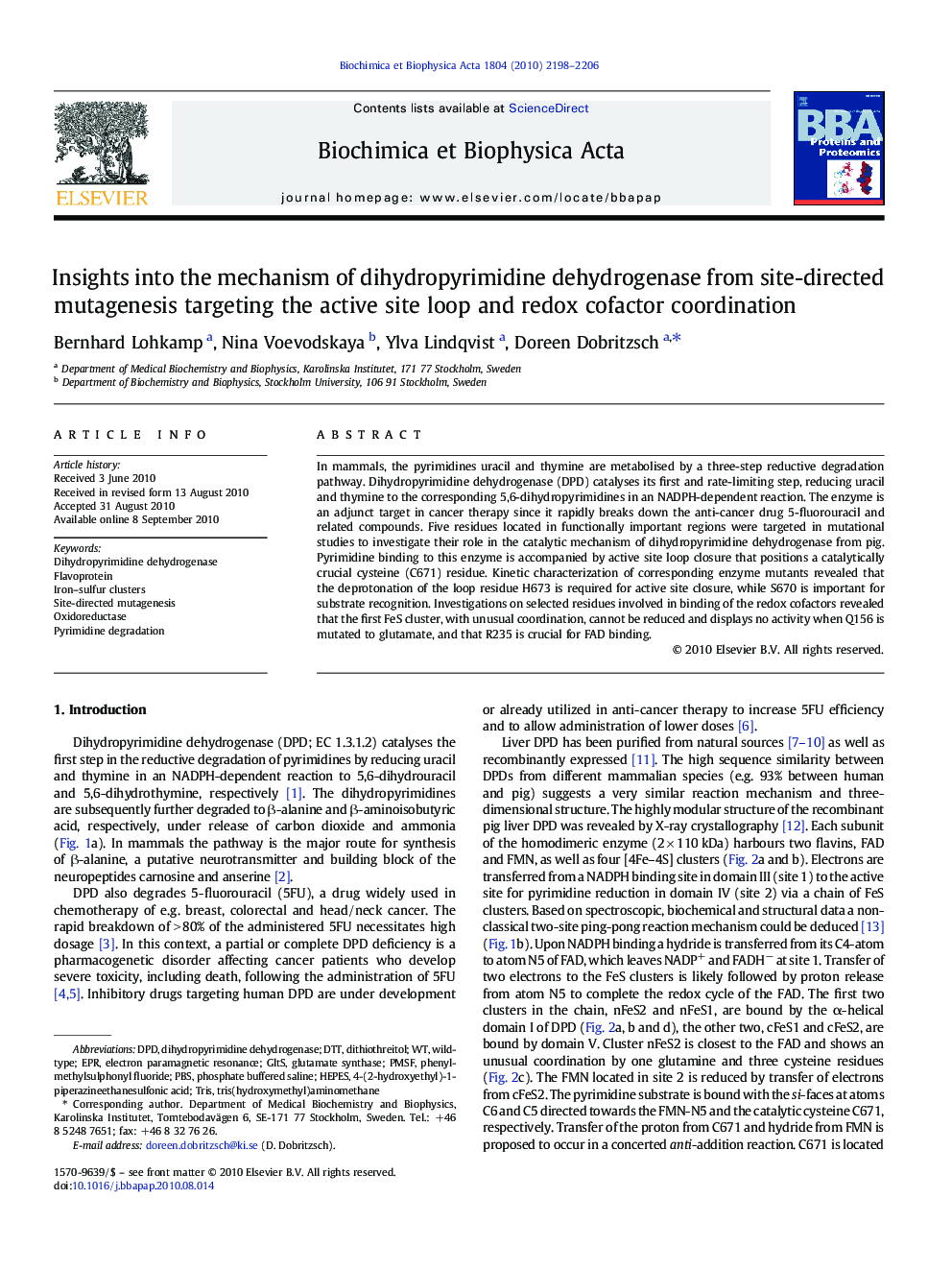| Article ID | Journal | Published Year | Pages | File Type |
|---|---|---|---|---|
| 1179964 | Biochimica et Biophysica Acta (BBA) - Proteins and Proteomics | 2010 | 9 Pages |
In mammals, the pyrimidines uracil and thymine are metabolised by a three-step reductive degradation pathway. Dihydropyrimidine dehydrogenase (DPD) catalyses its first and rate-limiting step, reducing uracil and thymine to the corresponding 5,6-dihydropyrimidines in an NADPH-dependent reaction. The enzyme is an adjunct target in cancer therapy since it rapidly breaks down the anti-cancer drug 5-fluorouracil and related compounds. Five residues located in functionally important regions were targeted in mutational studies to investigate their role in the catalytic mechanism of dihydropyrimidine dehydrogenase from pig. Pyrimidine binding to this enzyme is accompanied by active site loop closure that positions a catalytically crucial cysteine (C671) residue. Kinetic characterization of corresponding enzyme mutants revealed that the deprotonation of the loop residue H673 is required for active site closure, while S670 is important for substrate recognition. Investigations on selected residues involved in binding of the redox cofactors revealed that the first FeS cluster, with unusual coordination, cannot be reduced and displays no activity when Q156 is mutated to glutamate, and that R235 is crucial for FAD binding.
Research Highlights►Deprotonation of H673 is required for active site loop closure. ►S670 is important for substrate recognition. ►Cluster nFeS2 cannot be reduced when Q156 is mutated to glutamate. ►C126 has structural rather than functional importance. ►R235 is crucial for FAD binding.
